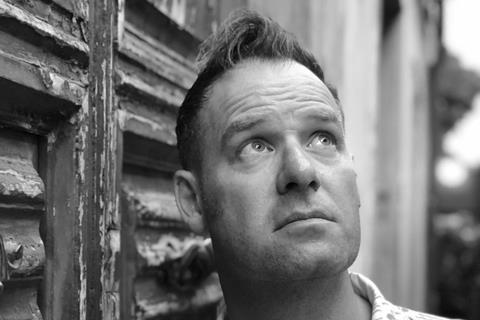Visitor centres will need to transform to survive the pandemicŌĆÖs impact, PurcellŌĆÖs David Hills thinks construction professionals can help

Heritage sector construction contributes some ┬Ż7.1bn GVA and employs 100,000 construction workers and 24,000 architects, building and civil engineers and chartered surveyors, according to Historic England. Now, the heritage sector is among the worst affected by the covid-19 lockdown and likelihood of ongoing social distancing.
As bleak as the situation may sound, there are opportunities emerging from the pandemic, for the visitor to have a better experience and for the operator to become more efficient and effective. As a result, there are opportunities for those involved in the construction, maintenance, restoration and re-presentation of heritage sites to deliver the transformations needed.
The scale of the impact of the pandemic on heritage destinations should not be underestimated. Traditional heritage destination activities such as parking, walking to the visitor centre, buying a ticket, walking around the attraction, consuming refreshments and browsing the ubiquitous gift shop all now present risks.
This transformation will start with reviews of buildings and site layouts. The visitor centre will certainly have to be rethought
With the government saying that the UK will need social distancing until at least the end of the year, and the likelihood for this behaviour to be etched into the nations psyche indefinitely, the implications are clear. Each heritage site will need to review and overhaul its operations in order to survive.
The most forward-thinking heritage operators will use data and apps to stagger and protect visitors, replacing ŌĆśriskyŌĆÖ brochures and audio guides with smart phone features, capturing their preferences and adapting the venue to meet them with a more bespoke offer. They will also up their digital game, providing virtual experiences to drive revenues as well as physical visits.
This transformation will start with reviews of buildings and site layouts. The visitor centre will certainly have to be rethought; this could go either of two ways. Sites with the luxury of space and, most importantly, money, may expand the visitor centre to provide the extra space that social distancing demands. The enlarged space can be fitted with automatic doors, increased orientation, exhibition and interpretation spaces, enhanced visitor flows and hand-sanitiser stations.
Others, however, may use the opportunity to contract, taking advantage of the reduced need for space and human interaction through pre-paid ticket sales, and virtual orientation and prior planning as assisted by the smartphone app.
>> Mark Farmer: ConstructionŌĆÖs recovery needs to be done right this time
>> Pete Redfern: How Taylor Wimpey got back on site
Internal spaces present particular challenges in heritage attractions. Their precious historic finishes, nooks and crannies and sumptuous heritage fabrics cannot be deep cleaned appropriately without risking damage. Face masks for all visitors may therefore become mandatory ŌĆō along with monogrammed face masks on sale in the gift shop. Signage and circulation will also need upgrading to prevent crowding.
Construction operations will be subject to government guidance in the same way as any other site. This will include social distancing, which may restrict or prevent some activities and result in enlarged welfare facilities and / or a reduction in numbers of operatives.
The net result of this is that construction works will probably become more expensive and take longer. This has particular implications for heritage sites where works generally take place out of season and within narrow timeframes to avoid impacting on visitors and revenue-generating activities. Post-pandemic construction campaigns may have to take place at times with visitors in attendance, or phased over several years.
Much work can be carried out without visiting site at all. There is potential for virtual models to be used for recording and surveying monuments and sites
However, heritage sites may have some advantages; the emphasis on outdoor work on many may ease social distancing restrictions, and fewer visitors at staggered intervals may facilitate works that would previously have been impossible.
Much work can be carried out without visiting site at all. Pre-pandemic, Purcell was already looking at the potential for virtual models to be used for recording and surveying monuments and sites. This would obviate the need for expensive site work by capturing information digitally to enable desk-based assessments to be undertaken, supplemented only where necessary by physical surveys.
Photogrammetry (detailed surveys based on photographs) by drone is an emerging technology, but Purcell is already finding great benefits in using this approach to capture with accuracy existing building facades, and at times internal spaces. Drone surveys are used to take high-resolution digital photographs of the site. These photographs are supplemented by a limited point cloud survey and then a basic 3D model can be created. From this model rectified photographs are generated that present an undistorted image of the survey areas in sufficient detail and resolution to be able to pick out individual features and defects.
The 3D model can also help the operator develop various innovations, such as providing virtual ways for the public to ŌĆśvisitŌĆÖ or plan their physical visit, aided by information ŌĆśtaggedŌĆÖ into the model. Additional revenues could be generated from virtual flaneurs.
While budgets may be tight, it would be a mistake for heritage to sideline the climate agenda now. In fact, coronavirus has brought into sharp focus how vulnerable many heritage sites are to unforeseen events. Energy costs make up a high proportion of most sitesŌĆÖ costs, so acting now to reduce these will make heritage attractions more economically and environmentally resilient in future. Using local supply chains for materials will also be vital in minimising financial and environmental costs.
Here then, is the way forward for the heritage sector, its fans and all us of us working in the sector. Success for both heritage destinations and their construction consultants, though, will depend on working closely together to identify all possible tactics for making sites super-efficient, extra appealing - and safe to visit.
David Hills, partner, Purcell




























1 Readers' comment